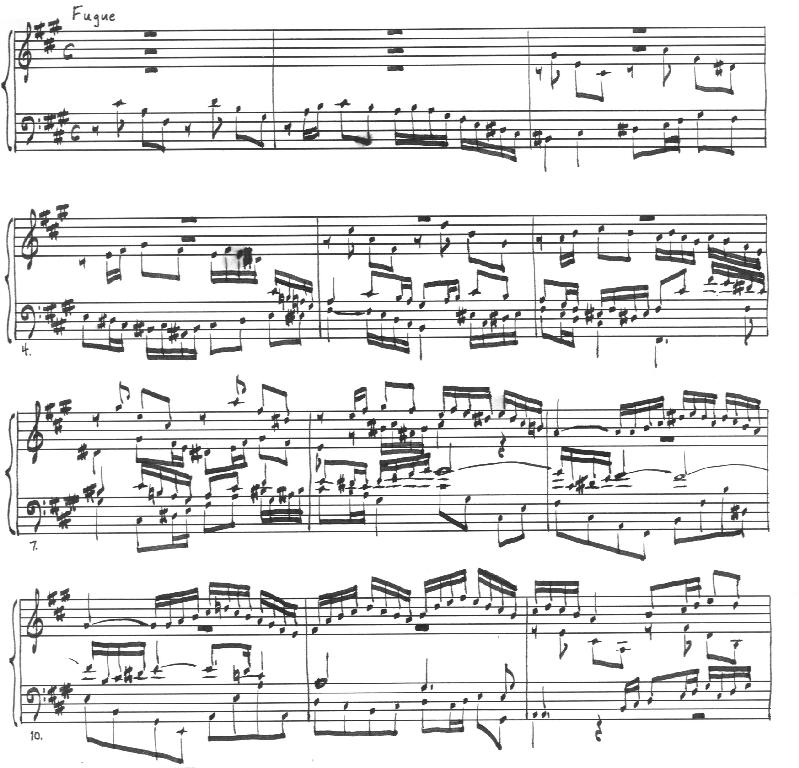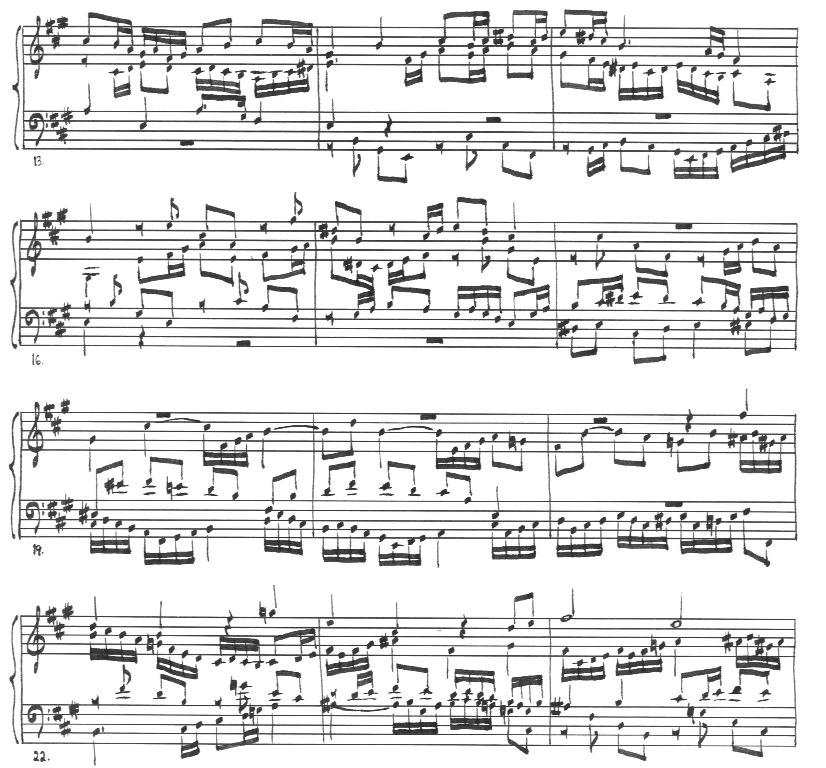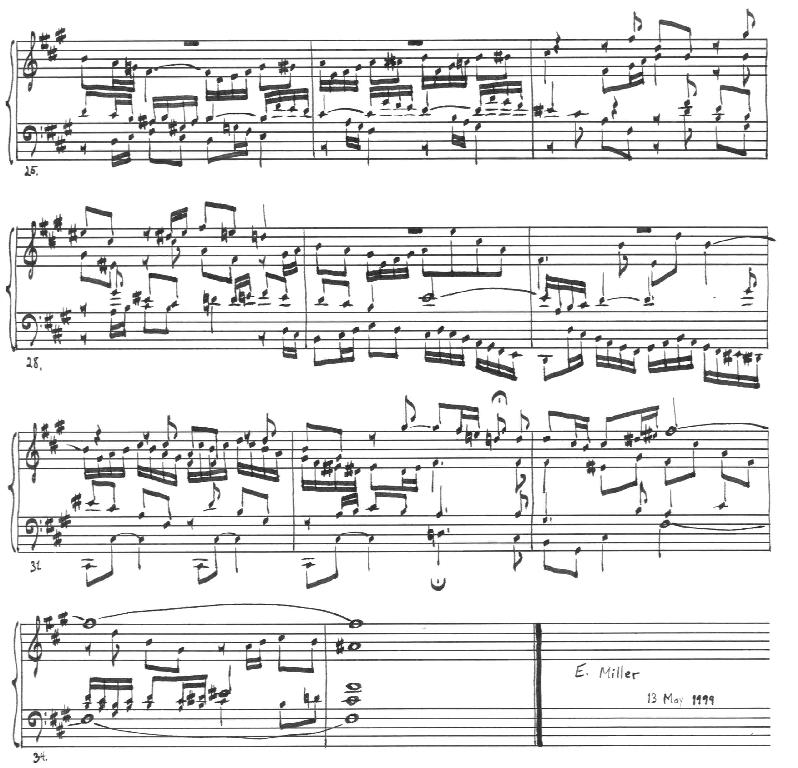Fugue in f#
Bars 25-33 of the following fugue serve as the background for my
homepage. The personal stuff page says
more about my music and other interests.
To listen to the fugue, use this mp3
file of Michael
Goldberg playing it on my electronic piano in 1999. (I am truly
impressed by the quality of Mike's performance, given how little prep
time he had. Although his current webpage at University of Cincinnati
doesn't seem to say it, Mike is an excellent composer as well as pianist.)
To download the manuscript, scroll down to the page you want (there are 3
pages), and right click on it (or however else your browser allows you to
target a picture for download). An analysis of the fugue follows the
manuscript.
Manuscript
I wrote the following manuscript using a
calligraphy pen (C4 thickness) dipped in black ink. (The smudges aren't
my fault: someone (not me) spilled drops of strawberry juice on the
manuscript.)



Analysis
This is a 4 voice fugue in 4/4 time, with entries
starting in the bass register and climbing up to the soprano. The
subject is one and a half measures long, beginning with two descending
triads and ending with a short motive. The two-beat tail (the 16th
notes finishing bar 2) allows the fugal answer to be real, starting on
G# (the other possibility, a tonal answer, would start on F#).
There is a clear countersubject, whose first statement begins on the
third beat of measure 3. It has two main parts both of which echo the
last two beats of the subject, the second in melodic inversion. This
echo of the subject becomes essential later on, when the subject is
placed in stretto.
The two-beat tail grows to a melodic line in the first episode (m. 8-12),
with suspensions in the middle voice and arpeggiation in the bass. The
sequence ends in the relative major key: A, as is usual for fugues in
minor keys.
The countersubject plays higher than the subject during the first
entrance in A major in m. 12-13 (inversion at the octave). The second
entrance follows in the dominant key, E major, just as in the exposition.
But then the pattern deviates, with the third major-key entrance in m. 16
on the dominant again, and the fourth on the tonic A major, in stretto
with the E major statement. Another stretto occurs in m. 17, as the last
two beats of the A major statement play along with the beginning of the
subject in E. Against this E major statement, the countersubject
proceeds in inversion at the 12th in m. 18 (dropping the subject down 2
octaves and raising the countersubject by a 5th yields the arrangement in
the second half of m. 14).
The inversion at the 12th leads into the second episode beginning in
m. 19, this time with the 16th note melodic line in the bass, the walking
line in the middle voice, and the suspensions in the top voice. By
m. 21, the texture has thinned to two voices, in relaxation before the
presence of all four voices in m. 22.
The b minor statement in the soprano line beginning with the last beat of
m. 21 is in augmentation with the b minor subject played at normal speed
in m. 22-23. Just as the augmentation is finishing in m. 24, another b
minor subject enters, with the countersubject above it.
The sequential episode in m. 25-26 prepares for the highlight stretto of
m. 27-29. Here, all four voices participate at various pitch levels,
each entering one beat after the previous one. The last motive of the
subject, which had appeared also as the first motive of the
countersubject, now plays both roles. The stretto culminates in a
deceptive cadence (on the submediant---the 6th scale degree), leading
into an episodic link to the home key.
The two stretto statements in f# at m. 31, again separated by a single
beat, in fact hide a third stretto statement between them,
consisting of every other 16th note beginning with the second beat of
m. 31. All of this occurs over a dominant adorned pedal tone in the
bass.
The brief coda occurs between two tonic pedal tones, with an extra fifth
voice added to take up the slack in texture.
Back to homepage





